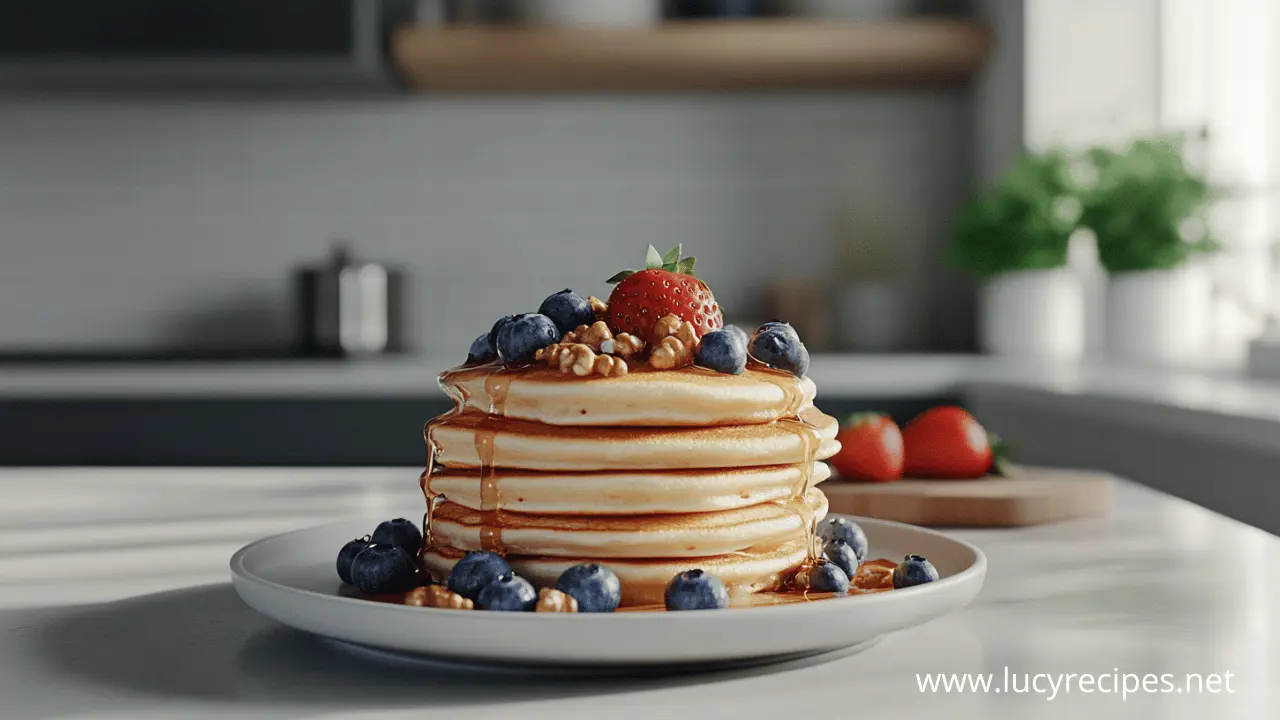Introduction
Pancakes are a beloved breakfast staple, but when drizzled with syrup, they often raise questions about their healthiness. Are pancakes healthy with syrup, or does this classic combination lean more toward an indulgent treat? While pancakes themselves can be made with wholesome ingredients, the type of syrup and portion size play a significant role in determining their overall nutritional value.
Traditional pancakes made with refined flour and sugary syrups can lead to blood sugar spikes and provide little nutritional benefit. However, choosing whole grain or protein-packed pancake recipes and pairing them with natural sweeteners like pure maple syrup or fruit can make a big difference. The key is balance—enjoying pancakes with syrup in a mindful way can still fit into a healthy diet. Let’s dive deeper into the health aspects of this popular breakfast choice and explore ways to make it both delicious and nutritious.
Table of Contents
Nutritional Profile of Pancakes
Pancakes can range from a nutrient-dense breakfast to a sugary indulgence, depending on their ingredients and toppings. When evaluating whether pancakes are healthy with syrup, it’s essential to break down their macronutrients, micronutrients, and calorie content.
Macronutrients
The macronutrient content of pancakes varies based on the type of flour and added ingredients. Traditional pancakes made with white flour are primarily carbohydrates, with minimal protein and fat. Whole wheat, oat, or almond flour pancakes offer more fiber and protein, making them a more balanced option. Adding eggs, Greek yogurt, or protein powder can also boost the protein content. However, topping pancakes with syrup significantly increases sugar intake, which can lead to energy crashes.
Micronutrients
Pancakes can provide essential micronutrients depending on their ingredients. Whole grain or fortified flours contain B vitamins, iron, and magnesium, while eggs and dairy add calcium and vitamin D. Adding fruit, nuts, or seeds can further enhance the vitamin and mineral profile. Unfortunately, processed syrups add little to no nutritional value, but natural alternatives like pure maple syrup contain small amounts of antioxidants and minerals like manganese and zinc.
Calories
The calorie count of pancakes largely depends on portion size and toppings. A single plain pancake (4-inch) typically contains 80–100 calories, but adding butter and syrup can easily push a stack of three pancakes over 500 calories. Traditional pancake syrups are high in refined sugars, adding unnecessary calories without nutritional benefits. Opting for fresh fruit, nut butter, or a drizzle of pure maple syrup can help keep the calorie count in check while maintaining flavor.
Balancing your pancake recipe and syrup choice is key to making this breakfast both enjoyable and nutritious.
Health Benefits of Pancakes
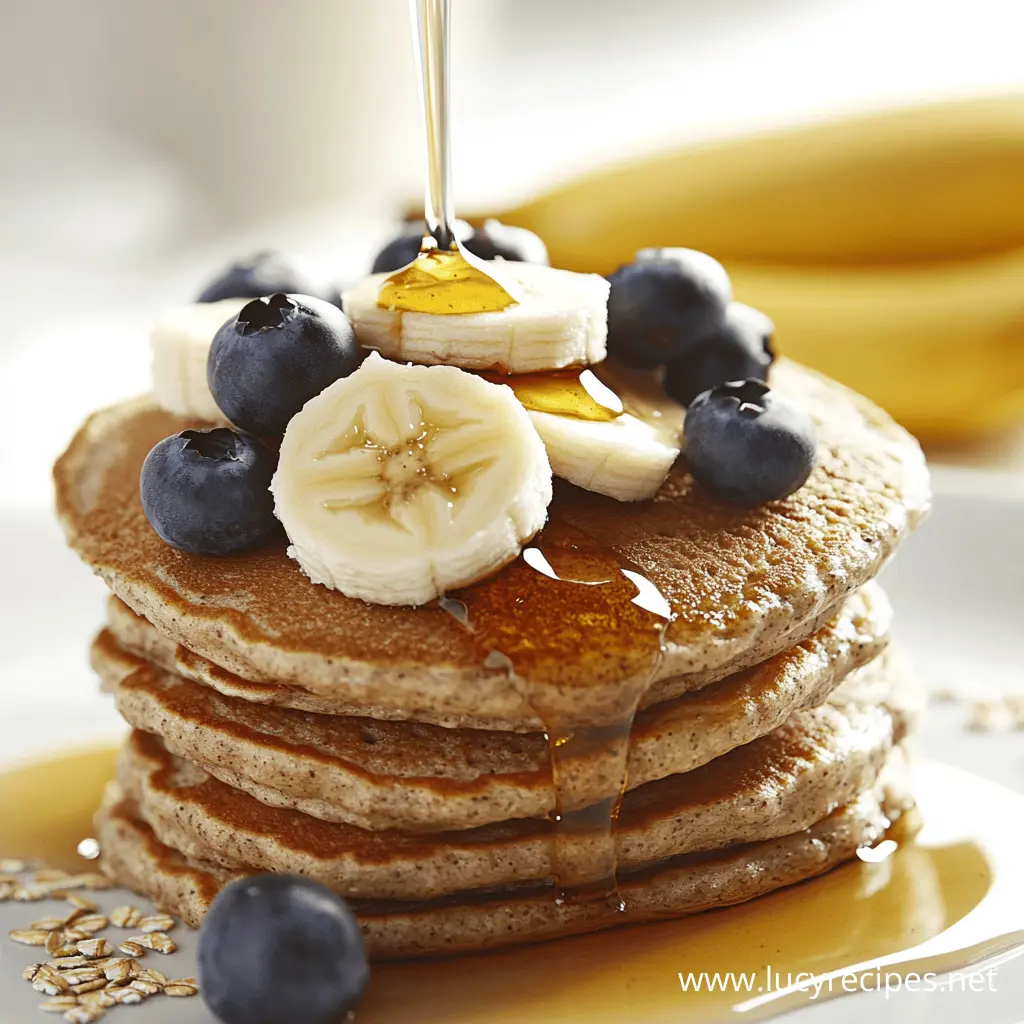
While pancakes are often seen as a comfort food, they can also provide some health benefits—especially when made with wholesome ingredients. The key is choosing nutrient-dense options that contribute to a balanced diet. Let’s explore how whole grains, fiber, and their role in energy supply can make pancakes a beneficial meal choice.
Whole Grains
Using whole grains in pancakes, such as whole wheat flour, oat flour, or buckwheat, adds essential nutrients that refined flour lacks. Whole grains are rich in B vitamins, iron, and magnesium, which support metabolism, brain function, and muscle health. Unlike traditional pancakes made with white flour, whole grain pancakes have a lower glycemic index, helping to regulate blood sugar levels when paired with mindful toppings.
Fiber
Fiber is an essential nutrient that supports digestion, heart health, and blood sugar control. Whole grain pancakes contain significantly more fiber than their refined counterparts, keeping you full longer and reducing cravings. Adding fiber-rich ingredients like flaxseeds, chia seeds, or mashed bananas can further enhance the fiber content of your pancakes. While traditional syrup lacks fiber, pairing pancakes with fresh berries or nuts can help balance the meal.
Energy Supply
Pancakes provide a quick and accessible source of energy, making them a popular breakfast choice. The carbohydrates in pancakes fuel the body, especially when combined with healthy fats and proteins for sustained energy. Choosing complex carbs from whole grain pancakes helps prevent blood sugar crashes, while natural toppings like pure maple syrup or nut butter offer additional nutrients to support endurance and focus throughout the day.
By making simple swaps and mindful choices, pancakes with syrup can be part of a balanced diet while offering valuable nutrients and lasting energy.
Nutritional Downsides of Pancakes
While pancakes can be a satisfying breakfast, certain ingredients can make them less nutritious. When paired with syrup, they can quickly become a high-calorie, high-sugar meal that may lead to energy crashes and other health concerns. Here’s a closer look at some of the nutritional downsides of pancakes.
Refined Carbs
Traditional pancakes made with white flour are high in refined carbohydrates, which are quickly digested and absorbed by the body. This can cause blood sugar spikes followed by energy crashes, leading to hunger soon after eating. Unlike whole grains, refined carbs lack fiber and essential nutrients, offering little nutritional value. Opting for whole grain, almond, or oat flour can help reduce these effects while providing sustained energy.
Sugar
One of the biggest concerns about pancakes with syrup is their high sugar content. Many commercial pancake syrups contain high-fructose corn syrup and artificial additives, which contribute to excessive sugar intake. Consuming too much added sugar has been linked to weight gain, inflammation, and an increased risk of conditions like diabetes and heart disease. To make pancakes healthier, choose natural sweeteners like pure maple syrup, honey, or fresh fruit.
Unhealthy Fats
Depending on the recipe, pancakes can also be high in unhealthy fats, especially when made with butter, processed oils, or full-fat dairy. While some fats are essential for health, excessive amounts of saturated and trans fats can contribute to high cholesterol and heart disease. Cooking pancakes with healthier oils like coconut or avocado oil and using nut butters or yogurt instead of butter can improve their nutritional profile.
By making mindful ingredient choices and limiting processed syrups, you can enjoy pancakes while reducing their negative health effects.
Types of Syrup and Their Nutritional Impact
The type of syrup you drizzle over your pancakes plays a major role in determining whether your breakfast is a healthy choice or an indulgence. While all syrups add sweetness, their nutritional value varies significantly. Let’s compare maple syrup, honey, and artificial syrups to see how they impact health.
Maple Syrup
Pure maple syrup is one of the best natural sweeteners to pair with pancakes. Unlike processed syrups, it contains small amounts of antioxidants and essential minerals like manganese, zinc, and calcium. It also has a lower glycemic index than refined sugar, meaning it causes a slower rise in blood sugar levels. However, it’s still high in natural sugars, so moderation is key. Opt for 100% pure maple syrup rather than maple-flavored syrups, which often contain added sugars and artificial ingredients.
Honey
Honey is another natural alternative that offers more than just sweetness. It contains antioxidants, enzymes, and trace amounts of vitamins and minerals, particularly in raw or unprocessed forms. Honey also has antibacterial properties and can support digestion. However, like maple syrup, it is still high in sugar and should be used sparingly to keep pancakes from becoming an overly sugary meal.
Artificial Syrups
Most commercial pancake syrups are highly processed and made with high-fructose corn syrup (HFCS), artificial flavors, and preservatives. These syrups provide empty calories and contribute to blood sugar spikes, inflammation, and long-term health risks such as obesity and diabetes. Unlike natural syrups, artificial syrups lack any beneficial nutrients, making them the least healthy option. If you’re looking for a lower-calorie choice, consider using fruit-based toppings, nut butters, or yogurt instead.
By choosing natural sweeteners in moderation, you can enjoy pancakes with syrup while making a more health-conscious decision.
Healthiest Syrup Choices
When it comes to enjoying pancakes with syrup while maintaining a balanced diet, choosing the right syrup is key. Some options provide natural sweetness along with essential nutrients, while others are high in processed sugars. Let’s explore the healthiest syrup choices based on natural ingredients, sugar content, and the best picks for a more nutritious breakfast.
Natural Options
Natural sweeteners like pure maple syrup, honey, and date syrup offer a healthier alternative to artificial syrups. Unlike processed pancake syrups, these options contain beneficial antioxidants, vitamins, and minerals. Fruit-based toppings, such as mashed bananas, pureed berries, or unsweetened applesauce, can also add sweetness without refined sugars. Choosing natural syrups ensures you’re getting more nutrients while avoiding artificial additives.
Sugar Content
Regardless of the type, all syrups contain sugar, but some have a lower glycemic impact than others. Pure maple syrup has a lower glycemic index than high-fructose corn syrup, meaning it leads to a slower rise in blood sugar levels. Honey, particularly raw honey, contains beneficial enzymes but is still high in sugar. Artificial syrups, made from high-fructose corn syrup and artificial flavors, have the highest sugar content without any nutritional benefits. To keep sugar intake in check, use syrups in moderation or combine them with fiber-rich toppings like nuts or seeds.
Best Picks
For a healthier pancake topping, the best syrup choices include:
- Pure maple syrup (Grade A or B for natural minerals and antioxidants)
- Raw honey (minimally processed for better nutritional value)
- Date syrup (a fiber-rich, natural sweetener with essential minerals)
- Homemade fruit compotes (using blended fresh fruits without added sugar)
By choosing these healthier syrup options, you can enjoy pancakes while reducing unnecessary sugars and maximizing nutritional benefits.
How to Make Pancakes Healthier
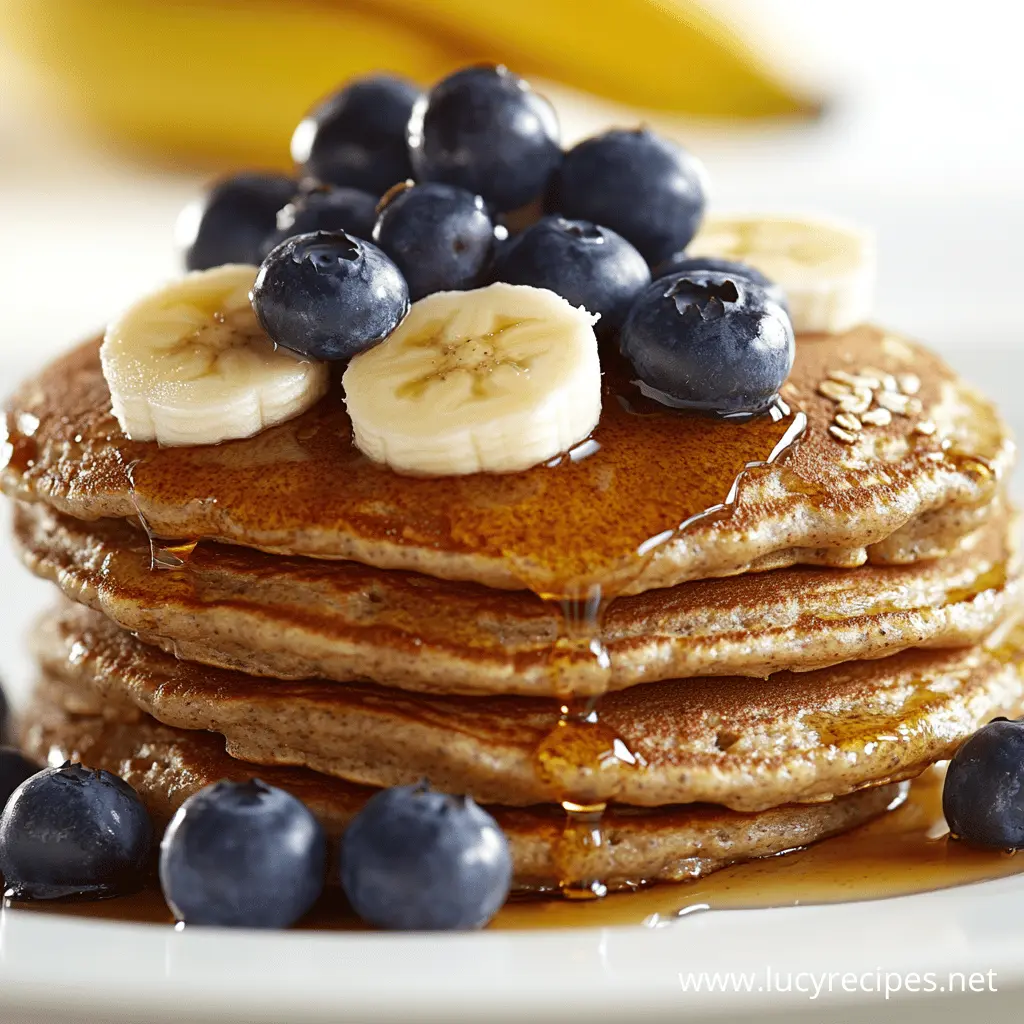
If you love pancakes but want to enjoy them in a more nutritious way, making smart ingredient swaps can help. By using whole wheat flour, adding protein, or choosing gluten-free alternatives, you can create a balanced breakfast that still tastes delicious. Here’s how to make your pancakes healthier while keeping them satisfying.
Whole Wheat
Switching from refined white flour to whole wheat flour is one of the easiest ways to boost the nutritional value of pancakes. Whole wheat flour is rich in fiber, B vitamins, and minerals like iron and magnesium, which help support digestion and energy levels. Unlike refined flour, whole wheat has a lower glycemic index, meaning it helps regulate blood sugar levels rather than causing spikes and crashes. For a lighter texture, try mixing whole wheat flour with oat or almond flour.
Protein-Packed
Adding protein to pancakes helps keep you full longer and prevents energy crashes. Simple ways to increase protein include using Greek yogurt, cottage cheese, protein powder, or adding extra eggs to the batter. You can also mix in nut butters, chia seeds, or flaxseeds for additional protein and healthy fats. Topping your pancakes with nuts or a dollop of Greek yogurt instead of syrup can further enhance the protein content.
Gluten-Free Alternatives
For those avoiding gluten, there are plenty of healthy flour alternatives that still make fluffy, delicious pancakes. Oat flour, almond flour, coconut flour, and buckwheat flour are great gluten-free options packed with fiber and nutrients. These flours also tend to be lower in carbs and higher in healthy fats, making them a better choice for those managing blood sugar levels. When using gluten-free flours, adding extra eggs or a binding agent like flaxseed meal can help improve the texture of the pancakes.
By making these simple ingredient swaps, you can enjoy pancakes with syrup in a healthier way while keeping them flavorful and satisfying.
Healthy Toppings Beyond Syrup
While syrup is a classic pancake topping, there are plenty of healthier alternatives that add flavor, nutrients, and texture without excessive sugar. Choosing nutrient-dense toppings like fruits, nuts, yogurt, or nut butter can enhance the health benefits of pancakes while keeping them just as delicious.
Fruits
Fresh fruits are a naturally sweet and fiber-rich alternative to syrup. Berries, bananas, apples, and peaches provide essential vitamins, antioxidants, and natural sugars that help satisfy sweet cravings without processed ingredients. Fruits like blueberries and strawberries are packed with antioxidants and vitamin C, while bananas add potassium to support muscle and heart health. For extra flavor, try sautéing apples or pears with a sprinkle of cinnamon.
Nuts
Adding nuts to pancakes or using them as a topping can boost healthy fats, protein, and fiber, helping to keep you full longer. Almonds, walnuts, pecans, and pistachios add crunch and heart-healthy omega-3 fatty acids. Chopped or crushed nuts can be sprinkled on top, or you can mix them into the batter for extra texture and nutrition.
Yogurt
Greek yogurt is a great alternative to syrup, adding a creamy texture and high-quality protein, probiotics, and calcium. Opt for plain Greek yogurt to avoid added sugars and enhance your pancakes with a tangy contrast. You can also mix yogurt with a bit of honey, vanilla extract, or cinnamon for a naturally sweetened topping.
Nut Butter
Nut butters like almond butter, peanut butter, or cashew butter provide a rich and satisfying topping that’s packed with healthy fats, protein, and fiber. A drizzle of unsweetened nut butter over pancakes can add a creamy texture and natural sweetness without excess sugar. Choose natural, unsweetened nut butters to keep your meal as healthy as possible.
By incorporating these wholesome toppings, you can enjoy pancakes in a more nutritious way while reducing the need for sugary syrups.
Comparing Pancakes to Other Breakfast Options
Pancakes with syrup are a popular breakfast choice, but how do they compare nutritionally to other common morning meals? Depending on ingredients and toppings, pancakes can range from an indulgent treat to a balanced breakfast. Let’s see how they stack up against oatmeal, eggs, smoothies, and toast.
Oatmeal
Oatmeal is a fiber-rich breakfast that helps with digestion and keeps you full longer. Unlike traditional pancakes made with refined flour, oatmeal contains complex carbohydrates, protein, and beta-glucan fiber, which can help regulate blood sugar levels. When topped with fresh fruits, nuts, or a drizzle of honey, oatmeal provides sustained energy without the sugar spikes caused by artificial syrups. However, pancakes made with whole grains and protein-packed ingredients can offer similar benefits.
Eggs
Eggs are a high-protein, nutrient-dense breakfast that provides essential vitamins and minerals like B12, choline, and healthy fats. Compared to pancakes, eggs offer more protein and fewer carbohydrates, making them a better option for blood sugar control and satiety. While pancakes can be made healthier by adding eggs or protein powder to the batter, they still tend to be higher in carbs and sugar when paired with syrup. A balanced breakfast could include eggs with a small portion of whole-grain pancakes for a mix of protein and energy.
Smoothies
Smoothies can be a nutritious and convenient breakfast, depending on the ingredients. A well-balanced smoothie with fruits, leafy greens, protein (Greek yogurt or protein powder), and healthy fats (avocado or nuts) can provide a mix of fiber, vitamins, and minerals. Unlike pancakes with syrup, smoothies often contain less added sugar and more natural nutrients, making them a lighter yet filling option. However, if pancakes are made with whole grains and paired with nutritious toppings like yogurt or nut butter, they can offer a similar level of balanced nutrition.
Toast
Toast, especially when made with whole grain or sprouted bread, can be a healthy and quick breakfast option. Toppings like avocado, nut butter, or eggs add protein and healthy fats that pancakes with syrup often lack. However, white toast with butter and jam can be just as high in refined carbs and sugar as traditional pancakes. To make pancakes a healthier alternative, choosing whole wheat flour, protein-rich add-ins, and natural sweeteners can help balance their nutrition.
Conclusion
Compared to other breakfast options, pancakes can be a nutritious choice when made with whole grains, protein, and fiber-rich toppings. However, traditional pancakes with syrup tend to be higher in refined carbs and sugar. If you love pancakes, making simple swaps—like using whole wheat flour, adding protein, and choosing natural toppings—can help make them a healthier option in your morning routine.
Pancakes for Weight Loss: Is It Possible?
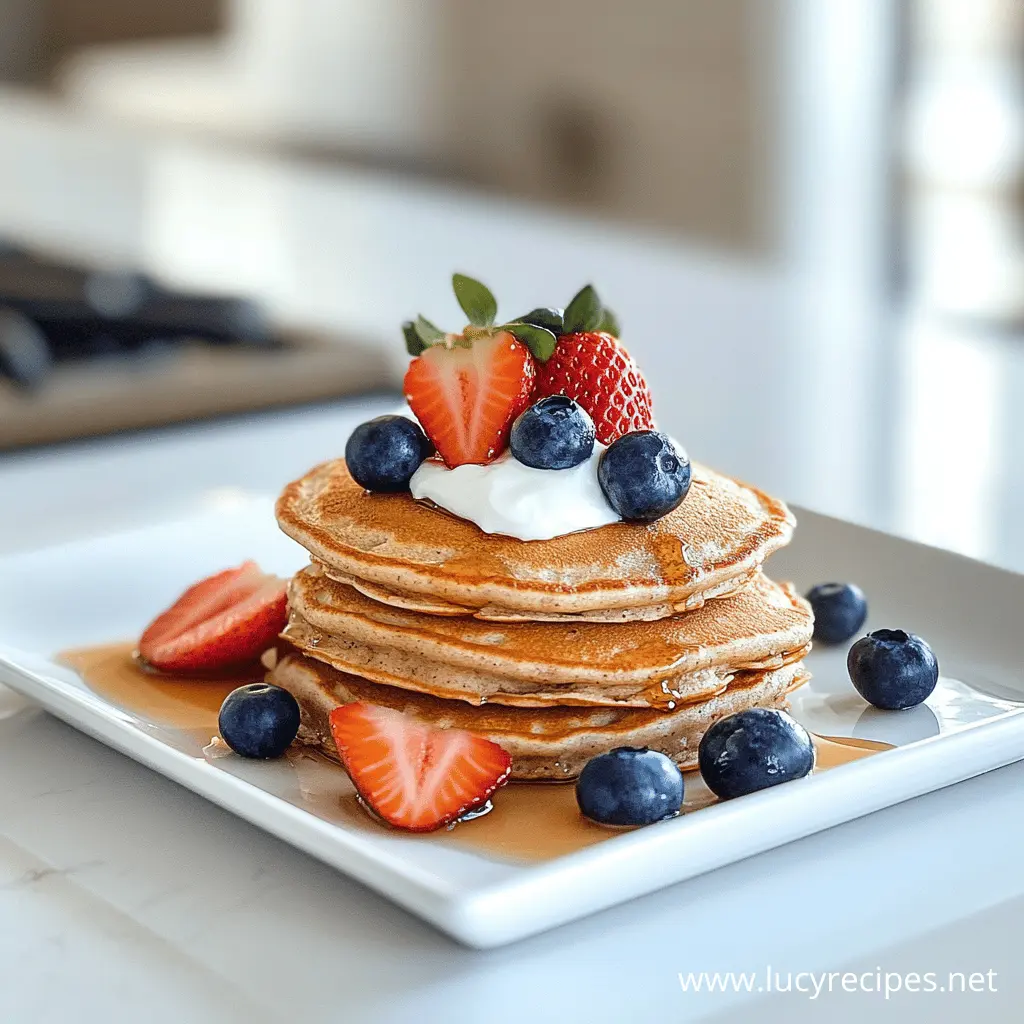
Many people assume that pancakes are off-limits when trying to lose weight, especially when paired with syrup. However, with the right approach, pancakes can be part of a balanced diet. The key is focusing on portion control and low-calorie variations to enjoy this classic breakfast without derailing your weight loss goals.
Portion Control
One of the biggest challenges with pancakes is portion size. A typical restaurant-style stack with butter and syrup can easily exceed 500–700 calories. To make pancakes work for weight loss, try:
- Eating smaller portions – Stick to one or two pancakes instead of a large stack.
- Using less syrup – Instead of drowning pancakes in syrup, use a small drizzle or try natural sweeteners like fruit or Greek yogurt.
- Balancing your meal – Pairing pancakes with a protein source like eggs or cottage cheese can help you stay full longer and prevent overeating.
Low-Calorie Variations
By modifying the ingredients, you can create healthier, lower-calorie pancakes that fit into a weight loss plan. Some simple swaps include:
- Whole wheat or oat flour – Adds fiber to help keep you full.
- Egg whites or protein powder – Boosts protein while keeping calories in check.
- Mashed bananas or unsweetened applesauce – Replaces sugar and adds natural sweetness.
- Low-calorie toppings – Instead of syrup, try fresh berries, cinnamon, nut butter (in moderation), or a dollop of Greek yogurt.
By controlling portions and making smart ingredient swaps, you can still enjoy pancakes with syrup while working toward your weight loss goals.
Impact of Pancakes on Blood Sugar
Pancakes with syrup can significantly affect blood sugar levels, especially when made with refined flour and processed sweeteners. Understanding their glycemic index (GI) and insulin response can help you make healthier choices to prevent blood sugar spikes and crashes.
Glycemic Index
The glycemic index (GI) measures how quickly a food raises blood sugar levels. Traditional pancakes made with white flour have a high GI, meaning they are rapidly digested and absorbed, leading to quick spikes in blood sugar. When paired with high-sugar syrups, the effect is even more pronounced.
Healthier alternatives like whole wheat, oat, or almond flour pancakes have a lower GI, providing a slower and more sustained release of glucose into the bloodstream. Choosing natural sweeteners like pure maple syrup in moderation or fresh fruit instead of artificial syrups can further reduce the glycemic impact.
Insulin Response
When blood sugar spikes, the body releases insulin to help transport glucose into cells for energy. However, frequent spikes from high-carb, sugary meals can lead to insulin resistance over time, increasing the risk of type 2 diabetes and other metabolic issues.
To minimize the insulin response:
- Choose whole grain or high-protein pancakes to slow digestion.
- Pair pancakes with protein or healthy fats (e.g., eggs, Greek yogurt, or nut butter) to balance blood sugar levels.
- Use natural sweeteners in moderation and avoid artificial syrups with high-fructose corn syrup, which can contribute to insulin resistance.
By making these adjustments, you can enjoy pancakes with syrup while maintaining better blood sugar control and long-term health.
Pancakes and Digestive Health
Pancakes can be easy to digest or cause bloating and discomfort, depending on their ingredients. The fiber content and digestion-friendly ingredients play a crucial role in how they impact your gut health.
Fiber Content
Traditional pancakes made with refined white flour lack fiber, which can lead to quick digestion, blood sugar spikes, and hunger soon after eating. On the other hand, pancakes made with whole wheat, oat, or almond flour contain more fiber, which:
- Promotes healthy digestion by supporting regular bowel movements.
- Feeds beneficial gut bacteria, aiding in overall gut health.
- Keeps you full longer, preventing overeating and energy crashes.
To boost fiber, consider adding flaxseeds, chia seeds, or mashed fruits like bananas into the batter.
Digestion-Friendly Ingredients
Certain ingredients can make pancakes easier on the stomach, while others may trigger bloating or discomfort. Here’s how to make pancakes more digestion-friendly:
- Use whole grains instead of refined flour to support gut health.
- Choose dairy-free options like almond milk or coconut yogurt if you’re sensitive to lactose.
- Incorporate probiotic-rich toppings like Greek yogurt to aid digestion.
- Limit artificial sweeteners and processed syrups, which can disrupt gut bacteria.
By making these simple swaps, pancakes can be a more gut-friendly meal while still being delicious and satisfying.
Are Pancakes Suitable for Special Diets?
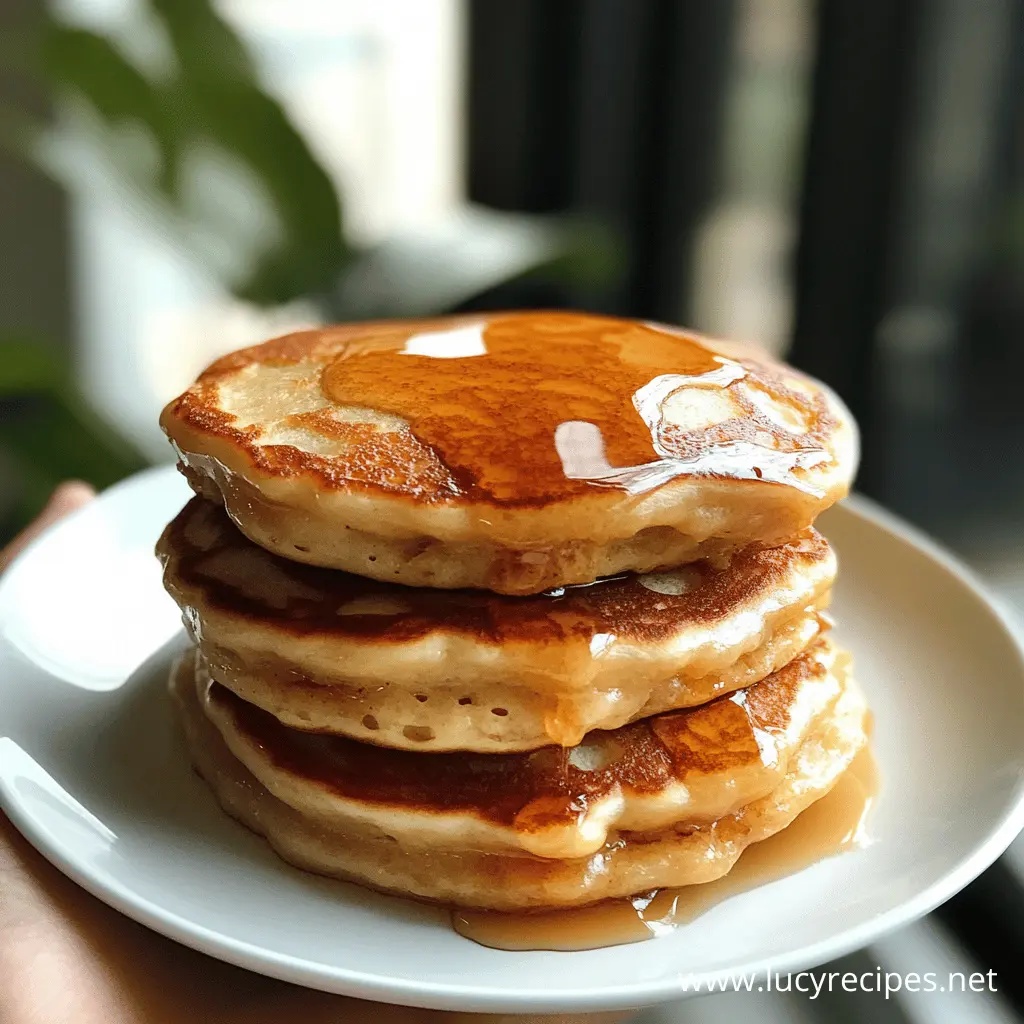
Pancakes can be adapted to fit various special diets, including keto, vegan, and gluten-free lifestyles. By making smart ingredient swaps, you can enjoy pancakes with syrup while meeting your dietary needs.
Keto
For those following a keto diet, traditional pancakes made with white or whole wheat flour are too high in carbohydrates. Instead, keto-friendly pancakes use low-carb ingredients like:
- Almond flour or coconut flour – Provides fiber and healthy fats.
- Eggs and cream cheese – Adds protein and keeps pancakes fluffy.
- Unsweetened nut milk – Reduces carbs compared to dairy milk.
To keep syrup keto-friendly, opt for sugar-free syrups made with natural sweeteners like monk fruit or erythritol.
Vegan
For a vegan diet, pancakes must be made without eggs, dairy, or honey. Fortunately, there are plenty of plant-based alternatives:
- Flaxseed or chia seed “eggs” – Mix 1 tbsp of flax or chia seeds with 3 tbsp of water as an egg replacer.
- Plant-based milk – Almond, oat, or soy milk works well.
- Coconut oil or applesauce – Replaces butter for moisture.
For a healthier syrup alternative, use pure maple syrup, agave nectar, or fruit compote.
Gluten-Free Adaptations
People with gluten intolerance or celiac disease can still enjoy pancakes by using gluten-free flours like:
- Oat flour (certified gluten-free) – High in fiber and protein.
- Almond flour – Low in carbs and rich in healthy fats.
- Buckwheat flour – Despite its name, it’s naturally gluten-free and nutrient-dense.
Pairing gluten-free pancakes with natural sweeteners like pure maple syrup or fresh fruit keeps them both delicious and digestible.
By making these adjustments, pancakes can fit into almost any diet without sacrificing taste or nutrition.
FAQs
Are pancakes healthy with syrup?
Pancakes can be part of a balanced diet, but traditional versions made with refined flour and sugary syrup tend to be high in carbs and low in nutrients. Choosing whole grain pancakes, adding protein, and using natural sweeteners like pure maple syrup in moderation can make them a healthier choice.
What is the healthiest syrup to put on pancakes?
Pure maple syrup, raw honey, and fruit-based toppings are healthier alternatives to processed pancake syrups, which often contain high-fructose corn syrup and artificial additives. These natural sweeteners offer some vitamins, minerals, and antioxidants while keeping sugar intake in check.
How can I make pancakes healthier?
You can make pancakes healthier by:
- Using whole wheat, oat, or almond flour instead of white flour.
- Adding protein sources like Greek yogurt, eggs, or protein powder.
- Choosing healthier toppings like fresh fruit, nut butter, or Greek yogurt instead of syrup.
Do pancakes cause blood sugar spikes?
Traditional pancakes made with refined flour and syrup have a high glycemic index (GI) and can cause blood sugar spikes. To prevent this, opt for whole grain pancakes, high-protein ingredients, and natural sweeteners to slow digestion and regulate blood sugar levels.
Can I eat pancakes while trying to lose weight?
Yes, but portion control and ingredient choices matter. Stick to one or two pancakes, use low-calorie flours, and limit syrup intake. Adding protein and fiber-rich ingredients can help keep you full longer and prevent overeating.
Are gluten-free pancakes healthier?
Gluten-free pancakes can be a good option for those with gluten sensitivities, but it depends on the ingredients. Whole grain gluten-free options like oat flour or buckwheat flour are healthier than processed gluten-free mixes that may contain refined starches and added sugars.
By making mindful choices, you can enjoy pancakes with syrup in a way that aligns with your health goals.
Conclusion
So, are pancakes healthy with syrup? The answer depends on the ingredients, portion sizes, and syrup choices. Traditional pancakes made with refined flour and topped with processed syrup can be high in sugar and low in nutrients, leading to blood sugar spikes and energy crashes. However, with a few adjustments, pancakes can be a nutritious and balanced part of your diet.
Opting for whole grain flours, adding protein-rich ingredients, and choosing natural sweeteners like pure maple syrup or fruit can improve the nutritional profile of pancakes. Additionally, mindful portion control and healthy toppings like nuts, yogurt, or nut butter can further enhance their benefits while keeping sugar intake in check.
Ultimately, pancakes with syrup can be enjoyed in a healthy way if consumed in moderation and paired with nutrient-dense ingredients. Making small swaps allows you to indulge in this breakfast favorite while maintaining a balanced diet.

